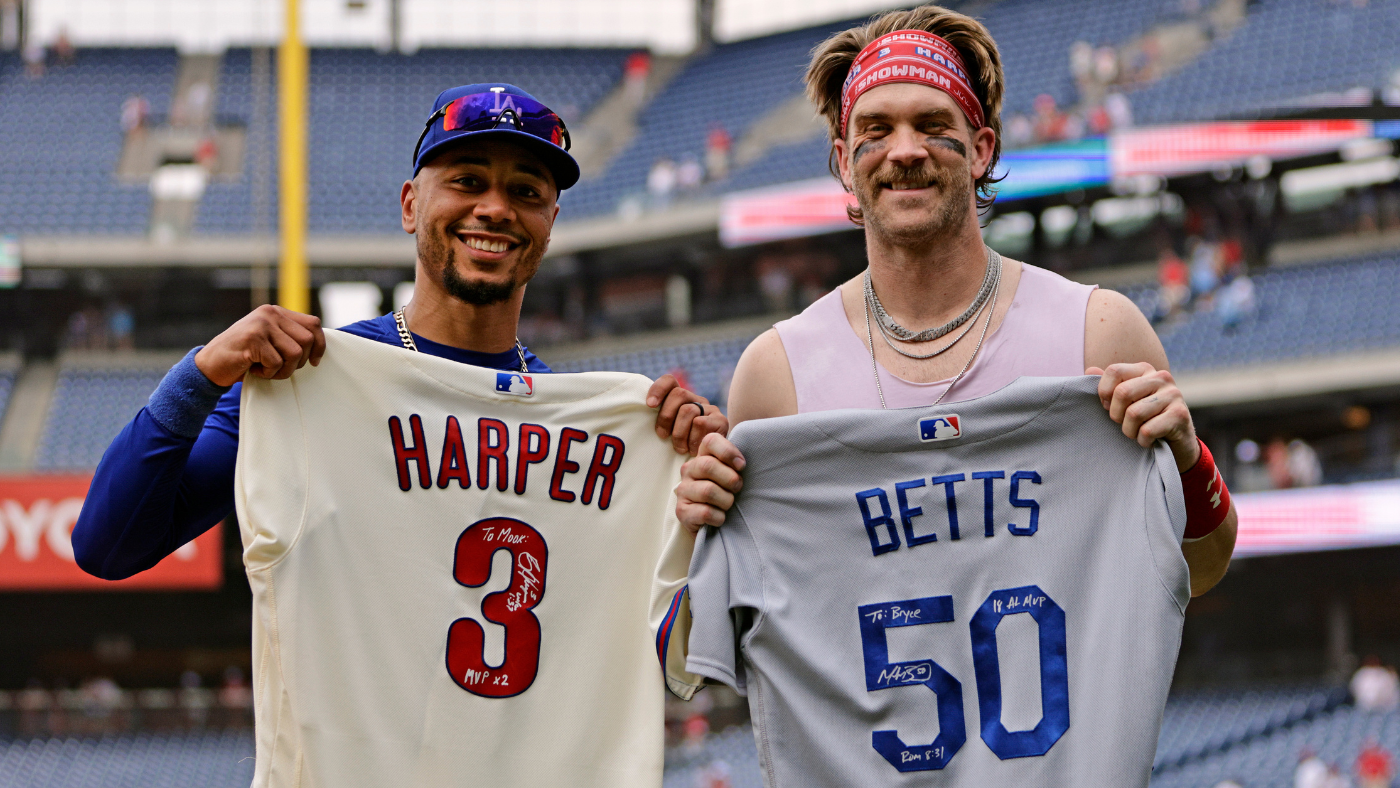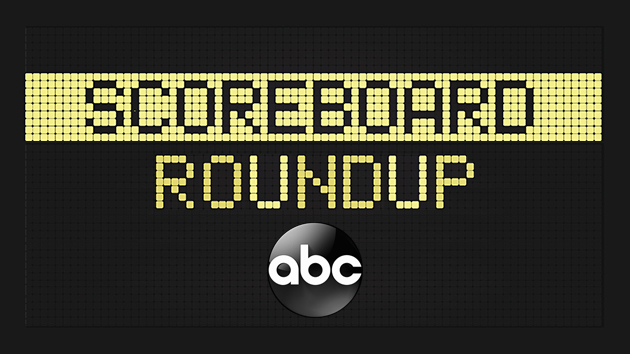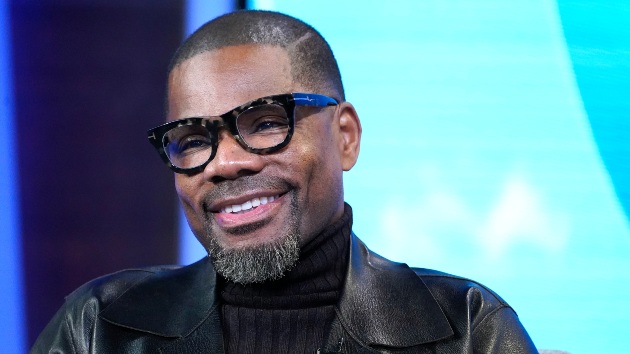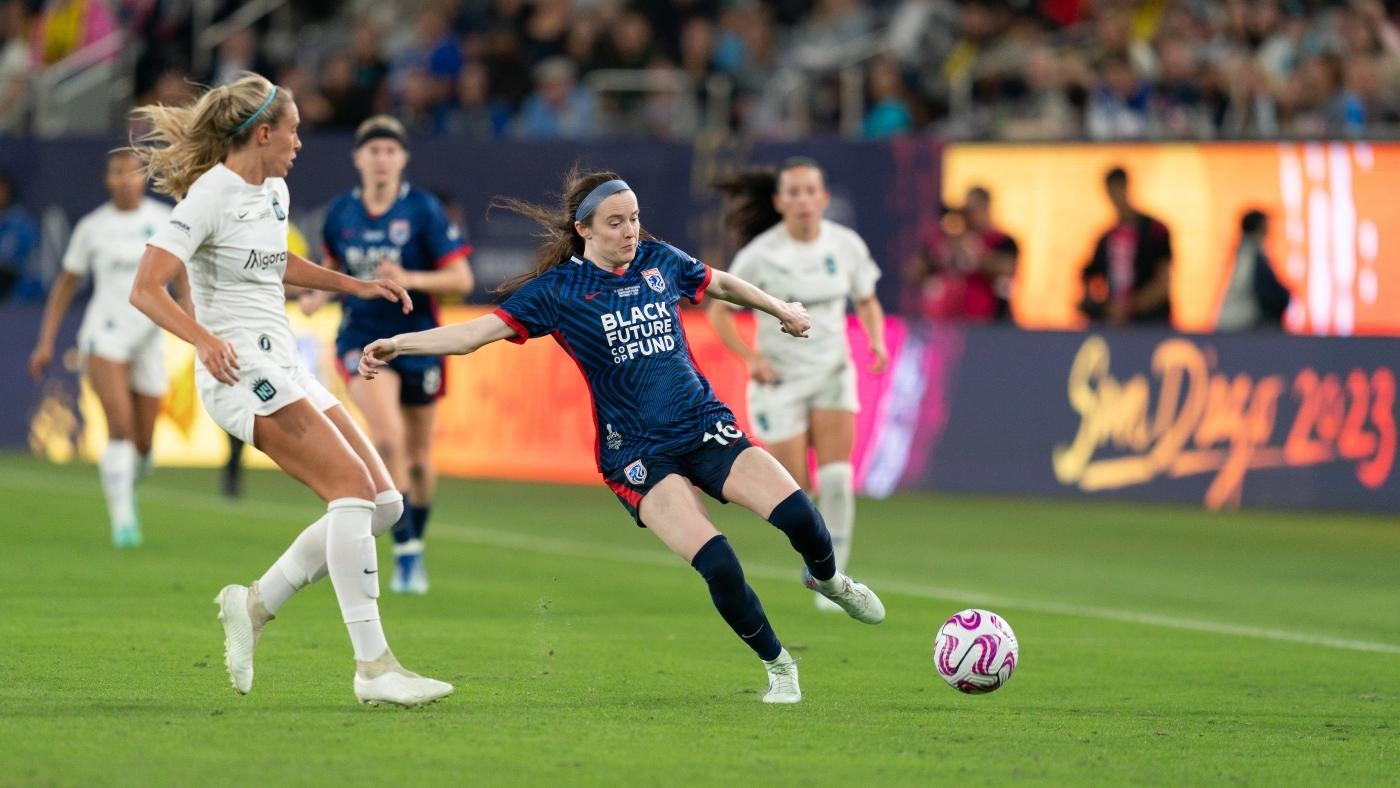Ranking 10 active MLB players closest to becoming Hall of Fame locks, and what they need to do to get there
Written by CBS SPORTS ALL RIGHTS RESERVED on January 19, 2024


Every year, I spend the winter thinking about the Baseball Hall of Fame ballot, but I also always dive back into history and, invariably, ponder where things stand with current players. Before this year’s Hall of Fame vote is revealed next Tuesday, let’s talk about the active MLB players and where they stand regarding the Hall of Fame, shall we?
Last year, I ran through every single active player worth a consideration and though there’s another season in the books, the needle shouldn’t have moved too significantly in one year. We don’t need to rehash matters with every player. Instead, let’s look at the players closest to being Hall of Famers right now and what needs to be done to move into “lock” status or even just really strong consideration.
Right off the top, we’ll skip Clayton Kershaw, Max Scherzer, Justin Verlander and Mike Trout. They are already clearly in “lock” territory and will head to Cooperstown someday barring something unforeseen. I believe Zack Greinke and Joey Votto are there as well. There will be dissenters, but it doesn’t much matter right now. Though neither is officially retired, their Hall resumes are nearly complete and we’re talking about what more needs to be done. As such, I’ll leave them out, too.
One last thing before we get to the list: I think Shohei Ohtani is going to make the Hall of Fame someday. He’s also only played six years in Major League Baseball and the Hall of Fame requires 10. That is to say, he doesn’t qualify (yet). I will, however, do a deep dive on this very subject next week and Ohtani will have the entire column all to himself.
And now, here are the next 10 closest active players to having a Hall of Fame resume and what more they can do to make it.
Just outside the top 10: Craig Kimbrel, José Ramírez, Francisco Lindor, Trea Turner, Carlos Correa, Corey Seager, Jacob deGrom, Chris Sale
10. Kenley Jansen
It’s much tougher for closers to make the Hall of Fame than any other position, and it should be. Still, it looks like Billy Wagner might make the Hall either this voting cycle or next. If that’s the case, it gives a nice road map for Jansen’s chances. Wagner ranks sixth all-time in saves (422) with stellar rate stats. Jansen is only two saves behind Wagner. He’s worse in ERA, but has a higher strikeout rate and better WHIP while not being far behind in innings.
There’s been much ado about Wagner’s low workload compared to the current Hall of Fame closers. He threw just over 900 innings across 16 seasons. Jansen has tossed 813 2/3 innings in his career so far.
If Jansen can get up over 900 innings without his rate stats exploding, there’s a good chance he follows in Wagner’s footsteps, assuming Billy makes it. The problem is Jansen heads to his age-36 season after posting a 3.63 ERA in only 44 2/3 innings last year. This one might go down to the wire.
(Kimbrel, by the way, is closer to Wagner than Jansen in the rate stats while sitting with 417 saves, but he only has 757 1/3 career innings.)
9. Aaron Judge
Judge is a bit behind due to a somewhat late start (his first full season in the majors was his age-25 year and he is currently two years short of the required 10 seasons needed for Hall of Fame consideration) and some injuries. This means that through his age-31 season, he’s only played in 835 games. He has packed quite a punch in there, though. He’s hit .282/.396/.586 (164 OPS+) and has an MVP. He’s also finished second and fourth in MVP voting. He’s led the league in homers twice, topped 50 twice and 60 once. He’s such a good all-around player that he averages an outrageous 8.1 WAR per 162 games. The rate stats are all there, to the point that Judge sits 35th in JAWS among right fielders. Of course, he’s 50th in WAR and is very lacking in the counting stats right now.
Given that he’s already on his way to his age-32 season, Judge is going to have to be a peak candidate. Still, 846 career hits, 137 doubles, 257 homers, 572 RBI and 614 runs just won’t cut it. I think the route here has to be just home runs. He’s such a good all-around player that if he gets to 500 homers, his case rounds out.
Can he do that? Well, he’s hit 138 home runs in the last three seasons combined, good for an average of 46 a year. He’s 243 home runs away and has eight years left on his contract. If he averages 31 homers a year the rest of the way, he’s over 500. That’s doable. If so, I think he’d make it.
8. Jose Altuve
Without the 2017 Astros sign-stealing scandal hanging as a potential dark cloud over his candidacy, Altuve would be in the top four, maybe as high as second here. Alas, it’s part of the equation, like it or not, for the voting body. Carlos Beltrán’s case right now is suffering for it and he was in the twilight of his career in 2017. Beltrán has been said to be the ringleader of the operation, but it’s possible voters will think that illegal measures helped boost Altuve’s impressive numbers. It’s tricky to know how everything will unfold, so this estimation is the best I’ve got for you. My hunch is he eventually makes it, but it’ll take a while.
In parts of 13 seasons, Altuve is a .307 hitter with a 129 OPS+. He’s already over 2,000 hits (2,047) with 209 home runs, 747 RBI, 1,062 runs and 293 stolen bases. He’s an eight-time All-Star and has an MVP along with three batting titles. He’s won the World Series twice and is one of the most decorated hitters in playoff history with 27 homers, 55 RBI and 89 runs in 103 games.
Altuve is already 22nd in JAWS at second base and likely soon passes players like Jeff Kent, Ian Kinsler and Dustin Pedroia.
He’s headed to his age-34 season and I think the easiest way to overcome any scandal worries would be to get to 3,000 hits. And, really, as long as he gets to 2,500, all the other numbers will be there for him.
7. Gerrit Cole
Cole finally won his Cy Young last season after five previous top-five finishes. It’s reasonable to call Cole part of the generation behind Kershaw, Scherzer, Verlander and Greinke since he debuted at least five years after all of them. If we go that far, will he end up the best pitcher of his generation (deGrom is also in the running)? And if that’s the case, that should bode well for his Hall of Fame chances, no?
Right now, Cole is 145-75 with a 3.17 ERA (130 ERA+), 1.09 WHIP and 2,152 strikeouts in 1,859 innings. He’s led his league in wins once, ERA twice, innings once, WHIP once and strikeouts twice.
He actually needs a lot more accumulation before he fits nicely into a Hall of Fame profile, though. Even in this day and age of lower starting pitcher workloads, of those four Hall of Famer pitchers I mentioned, Kershaw has the lowest inning total at 2,712 2/3, or almost 900 more than Cole.
This is to say that he’s not all that close to a lock just yet.
He’s also not that far off. He’s proven incredibly durable and is coming off a Cy Young season. He’s 33 years old and signed through 2028. Just getting to 3,000 strikeouts likely gets him home. That’s an average of about 170 per season the rest of this contract and he’s averaged 241 per year in his last three seasons.
6. Manny Machado
The bad news is Machado took a big step backward in 2023 from his MVP-caliber 2022 season, in which he finished second in voting. The good news is it was still only his age-30 season. It was also his 12th in the majors. A six-time All-Star, he has two Gold Gloves (including one Platinum) and four top-five finishes in MVP voting. He’s a .279/.339/.490 (125 OPS+) hitter with 1,737 hits, 333 doubles, 313 homers, 944 RBI and 914 runs.
Machado should get a boost in WAR and JAWS, since he’s an excellent defender. Sure enough, he sits 22nd in WAR and 20th in JAWS among third basemen. He’s below the average Hall of Famer in both, but not all too far off. Given his age, level of talent and fame factor, it’s a pretty decent bet that he works himself into range.
Barring a monster MVP season or something, he probably needs to work on the counting stats. Getting north of 2,000 hits, 1,200 RBI and 1,200 runs probably does the trick, but the 400-homer mark would surely clear the bar.
5. Bryce Harper
We’ve been through a lot with this one, haven’t we? Harper is still only heading to his age-31 season and is signed through 2031. He’s a two-time MVP and likely has a boost from the fame factor — how many players have truly been a bigger deal than Harper throughout his career? He’s been huge on the big stage, too, clubbing 16 homers in just 49 playoff games, including several clutch bombs. Going from Public Enemy No. 1 in Philly to becoming beloved in the city has been quite the transformation, too.
More than anything, he feels like a Hall of Famer, doesn’t he?
The rate stats are there. He’s a career .281/.391/.521 hitter, which is good for a 143 OPS+.
He will need to compile a bit more to justify the votes. He currently sits with 1,513 hits, 327 doubles, 306 homers, 889 RBI, 997 runs and 133 steals. He’s 35th all-time among right fielders in WAR and 34th in JAWS, though he could spend some or most of the rest of his career at first base.
So, yeah, he’s not there yet. With how much he walks (959 free bases at present), he can just worry about topping 2,000 hits (and probably approaches 2,500 with relative ease) and that’s plenty. I know 500 homers is what many people would eye, but there are only 14 right fielders in history with at least 400. Dave Winfield hit 465 and Vladimir Guerrero hit 449. Harper can surely get in that range, which should be more than enough to get him in. With the hit and home run numbers getting there, everything else takes care of itself. He’ll make it as long as he keeps compiling. Another MVP or a World Series trophy would just be gravy.
4. Nolan Arenado
I think Arenado has a few things going for him. Larry Walker and, likely this year, Todd Helton getting into the Hall of Fame shows some chipping away at the Coors Field stigma, which means by the time Arenado is on the ballot, he won’t have to deal with so much dismissal. Being traded to the Cardinals before his age-30 season and then posting some big power numbers shortly thereafter also helps. And, of course, there’s the glove. That plays anywhere and he’s well regarded as one of the greatest third basemen ever — and he’s got 10 Gold Gloves and six Platinum Gloves to show for it.
In and of itself, it seems like being named the single best defensive player in baseball six times warrants a big boost in Hall of Fame voting. The eight-time All-Star also has five top-six finishes in MVP voting.
In his career, Arenado is a .286/.343/.527 (122 OPS+) hitter. He has 1,669 hits, 364 doubles, 325 homers, 1,061 RBI and 874 runs.
Among third basemen, he’s 23rd in WAR and 19th in JAWS. He’s firmly in “Hall of the Very Good” territory, but he’s still only 32 and has plenty of time to tack on a bunch of counting stats.
In order to get in, he’ll likely need to get to somewhere comfortably above 2,000 hits (at least 2,250?), approach 1,500 RBI and top 400 home runs. With his defensive accolades, that’ll all surely be plenty.
3. Freddie Freeman
The seven-time All-Star has an MVP and has really taken things up a notch in recent seasons. In the last six years alone, Freeman has led the league in runs three times, hits twice, doubles four times and on-base percentage once. That’s a career for some Hall of Famers. After having hit .321 in the last four seasons combined, he’s now a career .301 hitter with a .388 OBP and .514 slugging percentage (142 OPS+).
Freeman went over 2,000 career hits last season, now has 2,114 and is on a pace that says he’ll get to 3,000. He’s the active leader with 473 doubles and 1,217 runs. He also has 1,143 RBI and 321 homers.
He now sits 26th in both WAR and JAWS among first basemen. He’s below the average of the current Hall of Fame first basemen, but not really too far off. In WAR, the five players right behind him are all Hall of Famers (Hank Greenberg, David Ortiz, George Sisler, Tony Pérez and Fred McGriff).
Freeman really isn’t far off here. Once he tops 2,500 hits, everything else is likely there, but stuff like 400 homers, 500 doubles, 1,500 RBI, 1,500 runs and, yes, 3,000 hits will be nice to solidify things. It’s difficult to envision him not making it at this point.
2. Paul Goldschmidt
Goldschmidt followed up his MVP year with a rough season by his lofty standards. Still, he’s rocking a career .293/.388/.519 slash, which is good for a 143 OPS+. He has 1,909 career hits with 413 doubles, 340 homers, 1,122 RBI and 1,134 runs along with 158 stolen bases. The seven-time All-Star has five Silver Sluggers and four Gold Gloves. That MVP is a nice boost.
Not unlike Votto, Goldy falls short in some of the counting stats while his WAR and JAWS look good. Goldschmidt actually has exactly the same JAWS as the average Hall of Fame first baseman. He’s slightly below average in WAR, but will get there this season or next.
This means he’s awfully close to being a lock right now, but I think he needs to boost the main counting stats. First, he needs to get over 2,000 hits, which he’ll likely do this year. Getting at least close to 1,500 RBI and runs would help. If he did those things and also got to 400 homers, it’s an easy and obvious case for getting in.
And if he retired right now, it’s possible he’d make it anyway.
1. Mookie Betts
Mookie might already be a lock. He’s logged his 10 required seasons as a major-leaguer. He has an MVP and three second-place finishes. He’s won the World Series twice and was arguably the best player on both of those teams. He has six Gold Gloves and six Silver Sluggers. He’s hitting .294/.373/.527 (138 OPS+).
He’s been so good on a per-season basis that his WAR is already 16th all-time among right fielders. JAWS meshes WAR with WAR7 (the seven best WAR seasons) to give a boost to peak candidates. It catapults Betts into 10th all-time in right field and above the average Hall of Fame right fielder, sitting above the likes of Paul Waner, Larry Walker, Sam Crawford, Shoeless Joe Jackson (yes, I’m aware he’s not a Hall of Famer), Tony Gwynn, Ichiro Suzuki, Dave Winfield and Vladimir Guerrero.
Betts could still stand to do some compiling, though. He’s at 1,485 hits, 347 doubles, 252 home runs, 756 RBI, 996 runs and 172 stolen bases.
In terms of what more he needs to do to be a Hall of Famer, I don’t see a good reason to dig deeper than this: Just keep playing and don’t totally fall apart. Even if he only somewhat fell apart he would probably make it.
The post Ranking 10 active MLB players closest to becoming Hall of Fame locks, and what they need to do to get there first appeared on CBS Sports.







